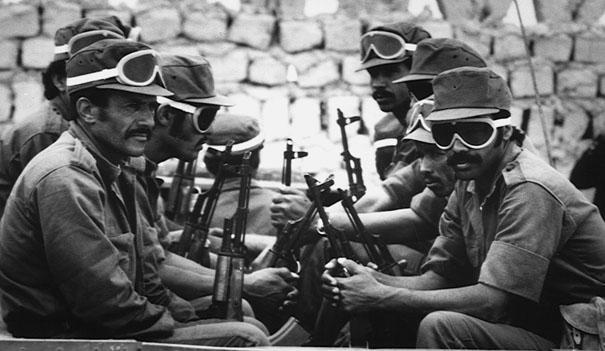Other NW African Issues

Saharawi soldiers during the Western Sahara War. (Creative Commons photo. Attribution to author and info can be found here)
When Spain gave the countries under their control in northwest Africa their independence (1956) they caused a lot of problems for themselves by keeping some of the land to themselves still. This caused a ton of resentment in Morocco because they correctly believed that this land should have been theirs based on the history of the land. The Spanish also tried to get involved in the politics of Morocco for years after giving them technical independence. This issue would cause a rift to grow between the two countries pretty quickly afterwards.
The Moroccans would start a war (Ifni War 1957) within the next year to get this land back and were able to get some of the land they were concerned with back. The Moroccans were not the only ones trying to fight to take land back either. A few years later the Algerians would start ‘the Sand War’ in an attempt to gain back land that was taken from them. This would quickly lead to hostilities between the Moroccan army and the Algerians instead of the focus being on the colonial leaders. Since the Moroccan army was so much
more advanced than the Algerian one was, it didn’t take long for the war to end though.
The drama in this region would lead to the Green March (1975) where the Moroccan government would have mass demonstrations against the Spanish because they were still trying to tell the people of Morocco what to do. The harsh feelings about this situation led 350,000 people to march in a non-violent demonstration against the Spanish. The Spanish troops were told by their superiors not to open fire against the people, which showed they were at least learning from previous mistakes. The mass demonstrations would show how unpopular the Spanish were there and lead Spain to sign the Madrid Accords where they truly gave up any power in the country. This show of force obviously made the people realize that they had the power if there were enough of them, but it also showed that Islam was a unifying force in the region also, since there were religious symbols all over the crowd during this issue also.
Morocco would also pick a fight with Western Sahara in a long, drawn out war with them over land called the Western Sahara War (1975-1991). This was partially a fight between Western Sahara and Spain over independence, but since Morocco felt that land that should have been theirs was a part of this, they jumped into the battle too. The Spanish would reply to a peaceful demonstration with violence that was typical for the time period in what is known as the Zemla Uprising (1970). When the Spanish police started to kill demonstrators they turned to violent attacks instead of nonviolent marches. After the Green March in Morocco, the Moroccan government started attacks on Western Sahara also. This move would actually unify the Spanish and Western Sahara to fight the Moroccan Army together, where the Saharan people used guerrilla tactics and the Spanish used more traditional war tactics. Things shifted when the Royal Moroccan Air Force started bombing refugee camps, killing 1,000s of people with napalm & white phosphorus bombs. This act was against the rules of war set up by the international community, so the United Nations (UN) would step in and put an end to the fighting.
Morocco would also pick a fight with Western Sahara in a long, drawn out war with them over land called the Western Sahara War (1975-1991). This was partially a fight between Western Sahara and Spain over independence, but since Morocco felt that land that should have been theirs was a part of this, they jumped into the battle too. The Spanish would reply to a peaceful demonstration with violence that was typical for the time period in what is known as the Zemla Uprising (1970). When the Spanish police started to kill demonstrators they turned to violent attacks instead of nonviolent marches. After the Green March in Morocco, the Moroccan government started attacks on Western Sahara also. This move would actually unify the Spanish and Western Sahara to fight the Moroccan Army together, where the Saharan people used guerrilla tactics and the Spanish used more traditional war tactics. Things shifted when the Royal Moroccan Air Force started bombing refugee camps, killing 1,000s of people with napalm & white phosphorus bombs. This act was against the rules of war set up by the international community, so the United Nations (UN) would step in and put an end to the fighting.

Map of both Morocco and Western Sahara in 1912. (Creative Commons photo. Attribution to author and info can be found here)
